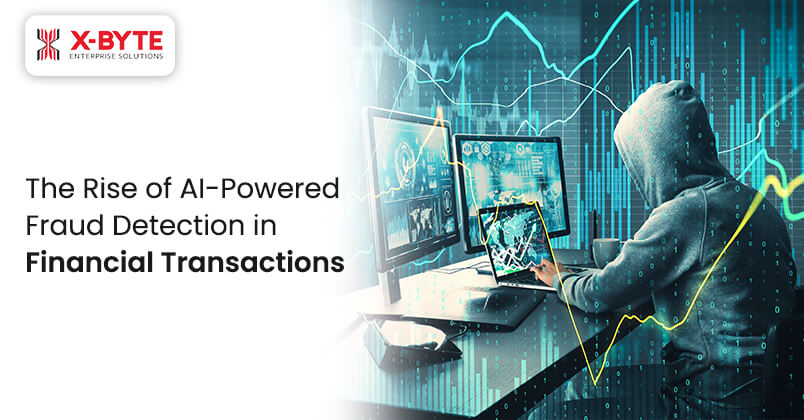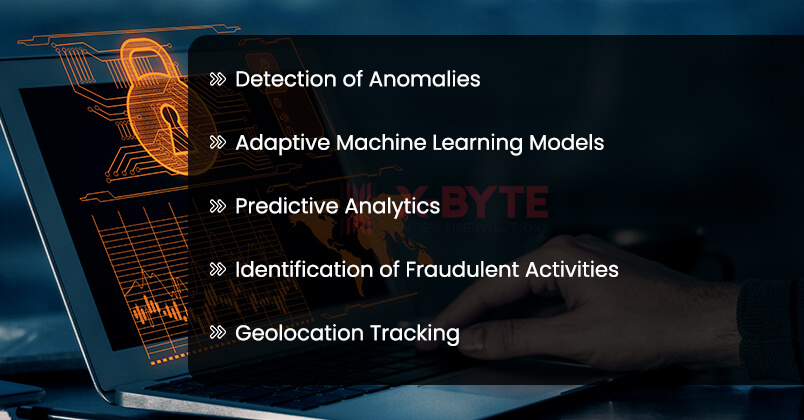-
solutinos
-
Hire
Frontend Developer
Backend Developer
-
NodeJS Developer
-
Java Developer
-
Django Developer
-
Spring Boot Developer
-
Python Developer
-
Golang Developer
-
Ruby on Rails Developer
-
Laravel Developer
-
.NET Developer
Technology
-
Flutter Developer
-
React Native Developer
-
Xamarin Developer
-
Kotlin Developer
-
Cross-Platform Developer
-
Swift Developer
-
MongoDB Developer
-
C Developer
-
Smart Contract Developers
Cloud
-
-
Services
Mobile Development
Web Development
- Work
-
Multi Services App
-
Food Delivery App
-
Grocery Delivery App
-
Taxi Cab Booking App
-
Multi Services App
-
OTT Platform APP
-
Social Media APP
-
Freelance Service App
-
Car Rental App
-
Medicine Delivery App
-
Liquor Delivery App
-
Sports Betting App
-
Online Coupon App
-
eLearning App
-
Logistics & Transportation App
-
Courier Delivery App
-
On-Demand Real Estate App
-
E-Wallet APP
-
Online Dating App
-
Handyman Services App
-
-
Process
-
Company

Quick Summary : The volume of financial transactions and the rise of sophisticated financial frauds are interrelated. Traditional methods of fraud detection are now outdated considering the sheer scale and complexity of modern financial operations. Today even the most seasoned financial players and banks are vulnerable to financial fraud. This has created a pressing need for AI fraud detection. AI in financial services acts as a bulwark to prevent fraud attempts by early detection and predictive analytics.
Fraud has become a nightmare for organizations, financial companies, HNIs (high-net-worth individuals), and even ordinary people. It can also eat up the lifetime savings of common people and become a serious concern. From identity theft to phishing attacks, fraudsters are thoroughly improving their tactics for committing financial fraud.
But how do organizations safeguard themselves from increasing fraud and cyber-attacks? Even the most sophisticated banks with high-grade encryption are susceptible to financial fraud. This is where there is a need for AI-powered financial fraud detection. These tools are embedded with machine learning, deep learning, and text analysis competencies that can easily detect, and even combat fraud-related activities.
AI fraud detection goes a long way in making their financial transactions safe and trusted. Generally, Fintech organizations such as banks, and NBFCs face higher risks of fraudulent activities as they deal in monetary transactions the most.
In this blog, we will understand different kinds of fraud in financial transactions, and how AI-powered fraud detection helps beat fraud attempts and protect financial transactions.
Types of Financial Transactions Fraud

There are different kinds of fraud in financial transactions. Fraudsters have become very smart and their fraudulent activities are posing a daunting challenge to Fintech and other organizations.
Do you know about one of the quickest and smartest frauds in the world done by the two brothers?
The Peraire-Bueno brothers were accused of money laundering and wire fraud. This fraud is the first of its kind said The US Department of Justice. General Lisa Monaco, Deputy Attorney, said “The Peraire-Bueno brothers stole $25 million in Ethereum cryptocurrency through a technologically sophisticated, cutting-edge scheme they plotted for months and executed in seconds.
Some financial frauds that Banks, NBFCs, and investors report are:
| Identity Theft | Payment Fraud | Credit Card Fraud | Phishing Frauds |
|---|---|---|---|
| Fraudsters steal and without permission use the personal or financial information of a person like their name, credit card details, bank account or Social Security Number, address, etc. | Payment fraud occurs when a cybercriminal acquires credit card, debit card, or net banking details and uses them to conduct unauthorized transactions. | In credit card fraud, a fraudster takes unauthorized access to the information of someone’s credit card and makes purchases or other transactions. | Phishing frauds ask for sensitive data or money. If you have unexpected requests for personal information or payment, it can be a kind of phishing attack. |
| Hacking | Cybercrime | Account Takeover | ACH Fraud |
| Cybercriminals hack banks account and withdraw money. This has happened even with very prestigious banks like | In cybercrime, fraudsters perform identity or internet fraud, ransomware attacks, or steal the financial information of people to obtain financial gains. | It is similar to identity theft in which fraudsters hack the online accounts of users and pose themselves as the real users of that account. | In Automated Clearing House (ACH) fraud, fraudsters open some illegal accounts as a fake identity and gain access to the legal accounts of users. |
Other Types of Financial Transactions Fraud Execution
- Fund Extraction: The attackers use online and e-payment systems to move the stolen funds to receiver banks.
- Spear Phishing: An employee in the targeted organization gets an email. This email has an attachment containing the backdoor. (a virus that infects the employee’s system and commits fraudulent transactions by stealing credentials)
- Network Infiltration: The attacker searches the network and locates the admin PC. It then embeds itself and records activity on this PC.
Protect your financial assets and stay ahead of financial fraudsters with real-time fraud detection capabilities!
Explore AI Fintech Solutions with X-Byte!
Why has Financial Transactions Fraud Increased?
Nowadays, financial transactions have evolved into various new forms, more than ever seen before. A significant number of these transactions occur online or via interconnected devices, which increases their vulnerability to fraudulent activities. This may be due to a lack of end-point security where the last device used for financial transactions is not secure.
The increase in Fintechs like digital wallets, UPIs, online payment platforms, etc. has raised the frequency of financial transactions fraud. Fintech entities have always faced risks from fraudsters. The fast-paced nature of these enterprises and rapid new customer acquisition attract criminals who identify one minor inefficiency or platform vulnerability (a loophole in software security) as an opportunity for fraud.
Furthermore, the generation of fraudsters with digital minds has also increased fraudulent activities. They use social media or online gathering areas (like messaging apps) to commit fraud.
To prevent organizations from facing financial transaction fraud, digital vigilance is extremely important. Also, companies can use AI Fraud Detection systems to combat fraud.
How AI-Powered Fraud Detection Systems Work?

The fraud detection systems powered by AI help you to identify and prevent fraudulent activities. These systems work in the following manner:
Detection of Anomalies
AI systems detect fraudulent activities by stating unusual behavioral patterns that may be the signs of potential fraud. The systems analyze real-time transactions to detect a behavior by comparing data with normal patterns to identify deviations. For instance, when an account of the consumer displays some unusual purchases in a short duration, then AI quickly analyzes this and marks this suspicious.
Adaptive Machine Learning Models
AI-powered fraud detection systems use adaptive machine learning models that change to combat new fraud tactics. These models look at data to find fraudulent patterns and unusual things. When scammers come up with new tricks, the AI algorithms improve their ability to spot them. The system can figure out how to spot new kinds of fraud and deal with them well.
Here's how machine learning enhances fraud detection:
- Supervised Learning: Uses labeled datasets to classify transactions as fraudulent or legitimate.
- Unsupervised Learning: Detects anomalies in transaction data without prior labeling.
- Deep Learning: Processes complex data to identify subtle patterns.
- Ensemble Methods: Combines multiple models for improved accuracy.
Predictive Analytics
The predictive data analysis of Artificial Intelligence is quite effective in identifying finance-related frauds. AI harnesses big data and algorithms of machine learning to detect unusual activities in financial transactions. Businesses and FinTech organizations can identify any suspicious activities in their accounts through predictive analytics. Also, AI predictive analytics lets the business identify fraudulent activities even before they happen.
Identification of Fraudulent Activities
AI systems enhance the ability to detect fraud through data enrichment techniques by analyzing new information sources. AI systems acquire multiple data sources including social media content, public documents as well as external database records. AI creates proper transaction profiles to separate legitimate transactions from fraudulent ones.
Geolocation Tracking
Geolocation tracking enhances security measures through the evaluation of geographical data. The detection of inconsistencies relies on AI monitoring the locational source of each transaction.
Now, let’s explore the benefits and use cases of Artificial Intelligence in detecting fraud in financial transactions of businesses and FinTech enterprises.
Use of AI in Fraud Detection
Traditionally, organizations detect fraud within financial transactions through manual processes. This way of fraud detection does not help organizations prevent fraud as fraudsters have changing tricks. Nowadays, the level of fraud has increased, and the need of using effective technologies has become extremely essential to prevent fraud.
Are you aware that credit card fraud worldwide is rising by 46% annually? It is expected that by 2026, the total losses will amount to $43 billion, with the US market contributing $12.5 billion to this figure.
With AI-powered fraud detection, fraud detection has become easy and fast. Integrating AI in Fintech is highly useful for safeguarding the financial information of companies. AI fraud prevention offers improved accuracy and real-time detection capabilities that one cannot find in manual methods. From analyzing large data sets to finding anomalies in millions of transactions, AI can prevent fraud with way better vigilance.
AI is quite useful in Fintech to keep vigilance over finance-related operations, calculate risk, and perform future projections. The effective working of AI made it commonplace in the finance sector. AI-powered solutions are highly useful in analyzing data sets, improving decision-making, and even identifying fraud. Banks (commercial, retail, investment, etc), NBFCs, Trading Platforms, and other digital businesses need AI in their operations. There are different use cases of Artificial Intelligence in Fintech.
Some use cases are:
- Evaluation and oversight of credit risk
- Identifying fraudulent activities
- Virtual or Digital assistants
- AI-driven personal finance solutions (both products and services)
- Automated trading and investment management systems

Need AI-powered smart vigilance for your financial organization?
Join hands with X-Byte for custom fintech software development to fortify your financial transactions!
Connect Now! Connect Now!There are several benefits to using AI fraud detection to prevent fraud in financial transactions, some of them are:
Improved Accuracy: AI-driven systems can handle large volumes of data more swiftly than traditional software. These systems minimize the margin for error in creating a differentiation between normal and fraudulent activities. They analyze every aspect of companies like customer behavior, and payment verification, and offer usable insights.
Real-time Detection: AI properly identifies and highlights irregularities in real-time banking activities. It states the use of applications, different payment methods, and financial transactions. This helps in speeding up the process of identifying fraud. With AI in banking, fraud detection becomes quick through which they can quickly block wrongdoings and stop fraud.
Benefits of Advanced Algorithms: Rules-powered solutions are capable of identifying only those irregularities that they have been designed to recognize. AI models use advanced algorithms (Machine Learning algorithms) that independently operate. These algorithms analyze past information and adjust to the changing trends of fraud. They can additionally create predictive models to reduce fraud risk with little human involvement.
Improved Customer Trust: In addition to effectively identifying anomalies, AI in banking and Fintech systems also reduces false positives. This is essential for protecting the customer experience while maintaining security.
More Scalability: AI systems can manage large amounts of transaction volumes with more efficiency without sacrificing performance. As the quantity of banking and Fintech transactions rises, the scalability of AI guarantees the improvement of fraud detection abilities.
Future of AI-Powered Fraud Detection
Artificial Intelligence is constantly evolving and shaping the future of fraud identification and prevention. Fintechs regularly demand transparency and reliability in their financial dealings and transactions. With AI-powered fraud detection tools, organizations can attain safe transactions and proper prevention of fraudulent activities. AI systems reduce false positives which further minimize the frequency of disruptions in transactions.
As per CNN, AI has just started (not even reached its fullest potential). AI has helped the US Treasury Department to identify fraud and recover $1 billion worth of fraudulent activities in the year 2024.
Key trends shaping AI-driven fraud detection include:
- Explainable AI (XAI): Focus on transparent AI systems that justify decisions.
- Advanced AI Models: Implementation of sophisticated models like Graph Neural Networks.
- Real-Time Collaboration: Integration with global threat intelligence and blockchain.
- Behavioral Biometrics: Analysis of user behavior patterns.
- Synthetic Data Generation: Use of AI-generated data for model training.
These advances strengthen fraud detection capabilities in the global financial ecosystem.
Therefore, the growth of AI is unmatchable, and the effective use of AI algorithms can immensely help Fintechs to stop fraud in their financial transactions and business processes.
Wrapping Up
AI-powered fraud detection helps businesses improve their financial security. AI provides banks, microfinance companies, fintechs, and other institutions with predictive analytics and real-time fraud detection abilities. If you are a bank, financial institute, or fintech looking to fortify your current payment systems with AI-powered software solutions, then X-Byte can help.
X-Byte Enterprise Solutions is a fintech software development company that delivers solutions customized for your financial technology needs. With our expertise in developing AI-powered software, you can attain seamless integration and real-time fraud detection in your financial transactions. This will help you to gain high levels of security by preventing fraud.
Strengthen your financial security with AI money management solutions. Get custom development solutions for the finance industry with X-Byte.
Get in touch now!
